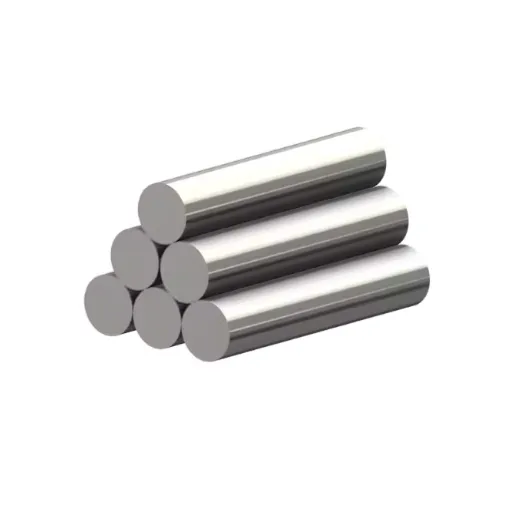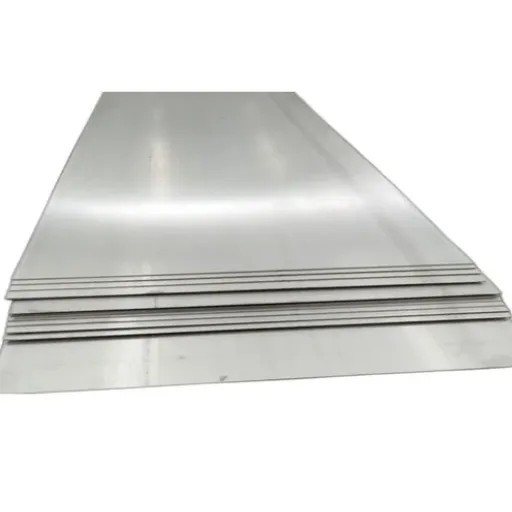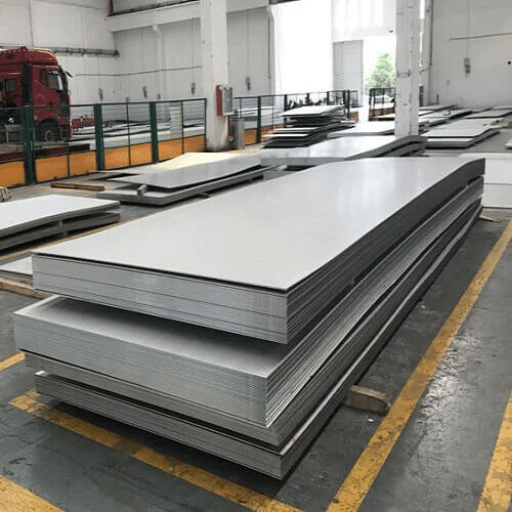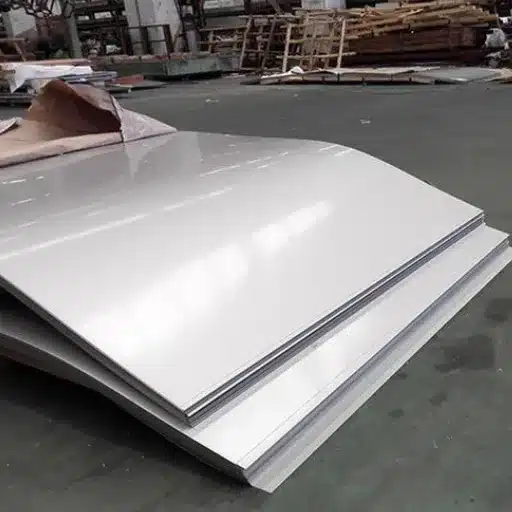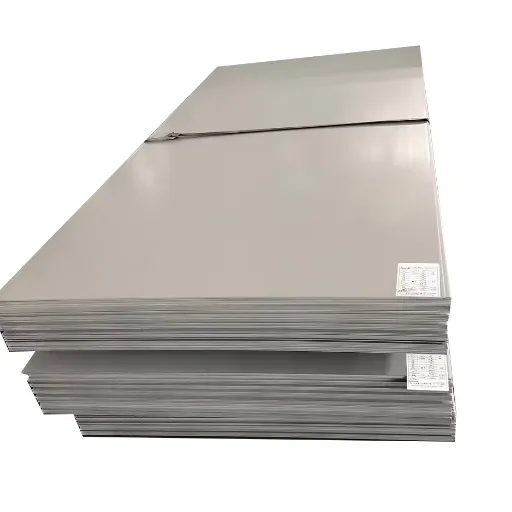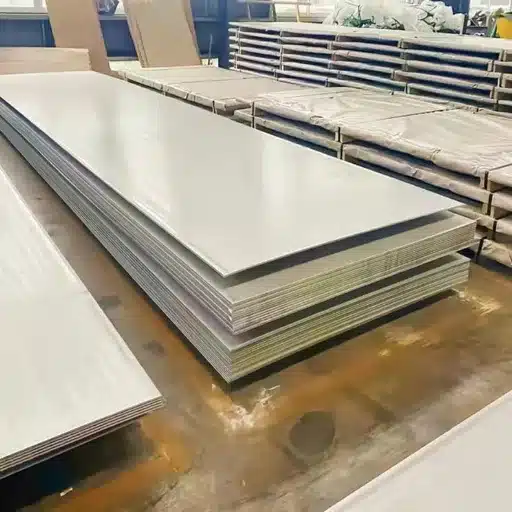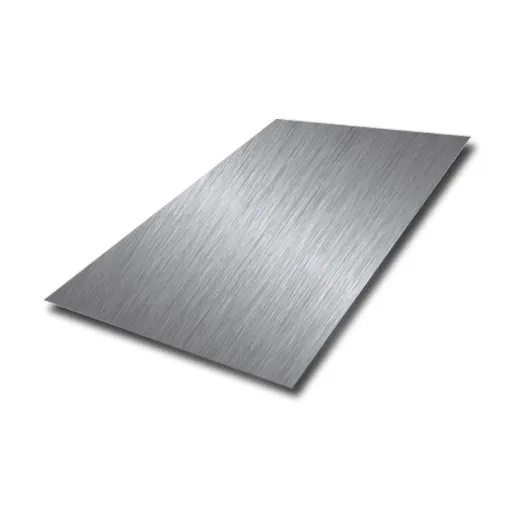Steel is probably the most used material in the world, being known by its strength and durability. But what makes steel so strong, and by what means do we know steel cannot withstand stress without breaking? A comprehension of tensile strength opens important studies into the mechanical properties of steel, aiding engineers, builders, and manufacturers to select the proper steels for different applications. From skyscrapers to minute mechanisms, tensile strength is important to uphold safety, inflexibility, and performance. So this article on tensile strength positions itself to explain what tensile strength is, why it is important, and how that drives the consideration in modern steel applications.
Tensile Strengths of Steel
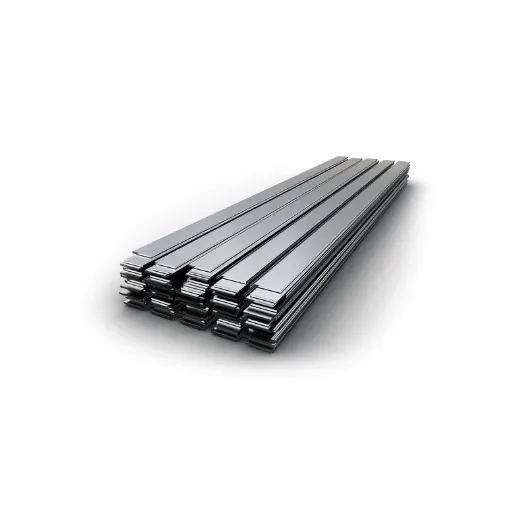
Definition and Importance of Tensile Strength
The term tensile strength stands for the utmost force or pressure that a material can tolerate when being stretched or pulled before it gives in. This property is vital in concluding how a material resists any elongation forces. This capability to resist tensile forces of steel is one of the foremost reasons for its use in such demanding applications as in construction, infrastructure, and heavy machinery.
Tensile strength considers how a material would behave under a force. On the other hand, steel with a much higher tensile strength makes the steel structure resist all weight loads, environmental forces, and mechanical stresses it would meet during the whole lifetime of the building. This property assures durability and safety in critical applications, wherein the material performs demandsingly well while under pressure.
Engineering and manufacturing fields consider tensile strength during material selection to optimize a given structure or system design. Materials with low tensile strength, under stress, may deform or fail, causing hazards or expensive repairs. Steel, with the given tensile strength and a measure of flexibility at a reasonable price, stands as the material of choice to fulfill the rigorous demands of modern engineering and construction projects.
Types of Tensile Strength: Yield and Ultimate
Yield and ultimate tensile strength are two varieties of measures for materials resisting stress without undergoing permanent deformation or failure. Yield tensile strength is the stress limit that can be applied to a material before it is subjected to permanent deformation. Definitely, the yield tensile strength of a material finds eminent use in engineering; at this stress, the material ceases to be elastic—it can no longer return to its original shape—but instead passes into the plastic domain, where the deformations are definite. This value is employed by engineers to design structures or systems such that they do not face any danger and ensure operating capacity under the applied loads.
Strong in tension means the maximum tensile stress a material can sustain until it breaks: This is a value usually higher than the yield strength because it corresponds to the absolute peak amount of stress that a material can tolerate just before failure. Consider ultimate tensile strength in cases where materials are subjected to very high forces, like in construction, aerospace, or automotive industries.
Both points are necessary for selecting materials and designing structures. Yield strength establishes safe operating boundaries so that materials are not subjected to permanent deformation under normal working conditions. In contrast, ultimate tensile strength ensures that the materials will withstand high-stress occasions without incurring catastrophic failure. With the knowledge of these properties, an engineer can confidently develop systems having safe assumptions on the cost and performance scale.
⚙️ Factors Affecting Tensile Strength of Steel
1. Chemical Composition
Generally, the tensile strength will be greater if the steel has more carbon. The carbon is important because it gives hardness and durability. Yet, too much carbon will make it brittle. Hence, a proper proportion must be maintained in setting the strength.
2. Heat Treatment Process
Heat treatment changes the microstructure—quenching and tempering processes create strong yet tough compatibility. When carried out properly, these treatments give the best mechanical performance to the steel, thus assisting reliability and performance.
3. Impurities and Alloying Elements
Impurities comprising sulfur and phosphorus may weaken steel, thus lowering tensile strength. In contrast, alloying elements of manganese, chromium, and nickel increase tensile strength by improving the hardening ability of steel, ductility, and resistance to stress. Controlling these elements during production helps manufacturers attain steel with desired mechanical properties corresponding to a particular use.
Mechanical Properties of Steel
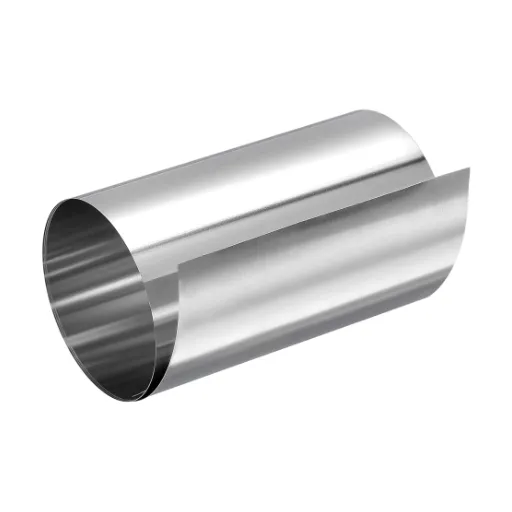
Overview of Mechanical Properties
Since these properties encompass the strength, ductility, hardness, toughness, and elasticity that steel can impart to an item, they decide the suitability for the application in question. Strength is the attribute of steel to resist forces without failing upon the application of force. Ductility is the capacity of steel to deform plastically without fracturing while subjected to tensile stress. Steel with higher hardness offers resistance to deformation or indentation, one of the major concerns in wear-resistant applications. Conversely, toughness measures the ability of steel to absorb energy before fracturing, withstanding a sudden impact. Elasticity describes the property of a solid that enables it to regain its previous form after being deformed. These properties are reciprocal, interological, and dependent on steel composition, steel microstructure, and steel metallurgy technique used during production.
The evolution of metallurgical science has, in recent times, facilitated the production of steel grades with superior mechanical properties. For instance, High-Strength Low-Alloy (HSLA) steels are intended to offer high strength and toughness at a low weight, thus providing an edge for use in automotive and construction industries. Ultra-High-Strength Steels (UHSS) have been gaining the reputation of being incredibly strong yet extremely light, aiding in safety and fuel efficiency in automobiles. Quenching and tempering are examples of heat treatments that can be applied so that steel possesses a peculiar blend of hardness and toughness required for aerospace and heavy machinery applications.
Notably, some mechanical-property testing procedures such as tensile testing, Charpy impact testing, and Hardness tests denote the performance of steel under certain conditions. Tensile testing measures the stress-strain response of a specimen, pointing out the yield strength, ultimate tensile strength, and ductility. The Charpy impact test measures the toughness of steel and its resistance to fracture under dynamical loading, while hardness tests like Brinell, Rockwell, and Vickers measure steel’s resistance to surface deformation. A thorough understanding of these mechanical properties allows engineers and material scientists to choose or make steel best suited to particular industry requirements, thereby ensuring safety, durability, and performance.
Comparison of Yield Strength vs. Ultimate Tensile Strength
Yield strength means the stress that can cause a material to develop permanent deformation, while the ultimate tensile strength is the greatest stress a material can sustain during breaking.
| Key Point | Yield Strength | Ultimate Tensile Strength |
|---|---|---|
| Definition | Stress before permanent deformation | Maximum stress before breaking |
| Measurement | Elastic limit | Breaking point |
| Relative Value | Lower | Higher |
| Application | Design safety limits | Failure prevention |
Why Mechanical Properties Matter
The mechanical properties of steel are decisive for the construction, manufacturing, and engineering industries. Among the primary applications is structural engineering, whereby steel’s strength and ductility allow it to be used in the creation of dependable frameworks for buildings, bridges, and infrastructures. These structures require steel that can support dead weight and live load, resisting environmental factors such as wind, earthquakes, and temperature variations. High-strength steels ensure that such constructions can support these diverse forces without failure or degradation over time.
Lastly, the automotive and aerospace industries depend equally on steel’s mechanical properties. In vehicles, steel provides both the structural integrity and crash-resistant features necessary for passenger safety. The combination of hardness, toughness, and lightweight characteristics makes steel a preferred material for components that must bear high-stress conditions. Similarly, in aerospace, where performance demands are extreme, advanced steel alloys are used for engine components, landing gear, and other critical parts that need both high strength and resistance to fatigue. Understanding and optimizing the mechanical properties of steel allows the design of safer, more effective, and efficient systems spanning all industries.
Common Steel Grades and Their Tensile Strengths
Steel is available in numerous grades, each specifically tailored for different applications, with varied tensile strengths. The choice of grade often depends on the unique requirements of a project regarding strength, ductility, weldability, and corrosion resistance. To better understand the selection, engineers consider the specific tensile strengths and properties of commonly used steel grades.
📊 Common Steel Grades Overview
Mild Steel (Low-Carbon Steel): Mild steel contains approximately 0.05% to 0.25% carbon and is characterized by its excellent ductility and weldability. Its tensile strength typically ranges from 400 to 550 MPa (58,000 to 80,000 psi). This grade is widely used in construction for beams, frames, and reinforcement bars, as well as in automotive body panels and general fabrication work where high tensile strength is not critical but formability is essential.
Medium-Carbon Steel: With carbon content between 0.30% and 0.60%, medium-carbon steel offers a balance between strength and ductility. Its tensile strength ranges from 550 to 700 MPa (80,000 to 101,500 psi). This grade is commonly found in machinery parts, automotive components, railway tracks, and gears where both strength and toughness are required. Heat treatment processes can further enhance its mechanical properties.
High-Carbon Steel: High-carbon steel contains 0.60% to 1.00% carbon and provides superior hardness and strength. Its tensile strength can reach 800 to 1,200 MPa (116,000 to 174,000 psi). This steel is utilized in applications demanding wear resistance and hardness, such as cutting tools, springs, high-strength wires, and dies. However, it has reduced ductility and weldability compared to lower-carbon grades.
Stainless Steel: Stainless steel includes various grades with chromium content (typically 10.5% or higher) that provides excellent corrosion resistance. Tensile strengths vary widely depending on the specific grade, ranging from 500 to 1,200 MPa (72,500 to 174,000 psi). Common applications include kitchen equipment, medical instruments, chemical processing equipment, and architectural features where both strength and corrosion resistance are necessary.
Testing Methods for Tensile Strength
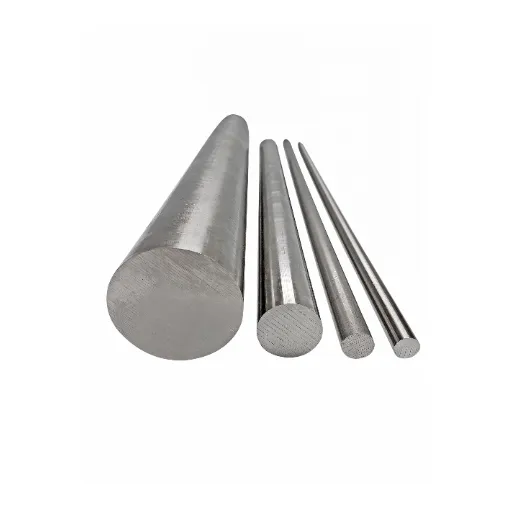
Standard Tensile Testing Procedure
The most prevalent method for determining the tensile strength of steel is the tensile test, also known as a tension test. In this procedure, a standardized specimen of steel is subjected to a controlled tensile force until failure occurs. The test is conducted using a universal testing machine (UTM), which applies a progressively increasing force while measuring the specimen’s elongation.
The specimen is typically shaped as a dogbone or cylindrical form with a reduced cross-sectional area in the gauge section. This design ensures that deformation and eventual failure occur in a predictable location. During the test, the machine records the applied load and the corresponding extension of the gauge length. This data is then used to generate a stress-strain curve, which provides valuable information about the material’s elastic modulus, yield strength, ultimate tensile strength, and ductility.
⚡ Key Measurements in Tensile Testing
- Elastic Region: The initial linear portion of the stress-strain curve where the material returns to its original shape after load removal
- Yield Point: The stress at which permanent deformation begins
- Ultimate Tensile Strength: The maximum stress the material can withstand
- Fracture Point: The stress at which the material completely fails
Alternative Testing Methods
Besides standard tensile testing, various alternative methods are employed to assess steel’s mechanical properties, especially when conventional testing is impractical or when specific information is required. These methods offer flexibility in assessing in-service structures, quality control during manufacturing, or when dealing with unique geometries.
- Hardness Testing: Hardness tests, such as Brinell, Rockwell, and Vickers, provide an indirect assessment of tensile strength. These tests measure a material’s resistance to indentation, which correlates with its tensile properties. Hardness testing is non-destructive and can be performed quickly on finished products or structural components.
- Impact Testing: Impact tests, particularly the Charpy and Izod tests, evaluate a material’s toughness and its ability to absorb energy during fracture. While not directly measuring tensile strength, these tests provide crucial information about how steel behaves under sudden loading conditions.
- Ultrasonic Testing: Ultrasonic methods can detect internal flaws and measure material properties without causing damage. This technique uses high-frequency sound waves to assess material integrity and can provide estimates of mechanical properties based on wave propagation characteristics.
- Magnetic Testing: Magnetic particle inspection and other magnetic methods can identify surface and near-surface defects in ferromagnetic materials. These techniques are valuable for quality control and ensuring that steel components meet required specifications.
Advanced Technologies in Strength Testing
The field of material testing has witnessed remarkable advancements with the integration of cutting-edge technologies. These innovations enhance precision, efficiency, and the depth of analysis in strength assessments, enabling engineers and researchers to make more informed decisions about material selection and structural design.
🔬 Non-Destructive Testing (NDT) Techniques
Under NDT technologies, one can inspect steel by ultrasound or by magnetic particle inspection. Both methods see to it that the material is free from inward irregularities and structure is verified in real-time.
🔭 Laser Scanning and Microscopy
Laser scanning technologies and electron microscopes provide an advanced view of the microgalaxy within steel, furnishing research with details regarding the grain boundaries and assisting in deformations analyses caused by applied stresses.
💻 Digital Twin Simulation
Digital twins are a combination of simulation and physical data to predict how steel will perform under particular circumstances. Through this technology, engineers can simulate stress tests and undertake strength analyses without the need of carrying out any physical trial.
⚛️ X-Ray Diffraction (XRD)
XRD is capable of defining the residual stress and phase composition in steel with the utmost accuracy. This technique is especially useful for evaluating the mechanical strength of complex alloys that are used in critical applications.
🤖 AI and Machine Learning Integration
AI systems assist in analyzing large datasets that are collected from tests and use them to predict trends in strength and performance accurately. Machine learning algorithms improve testing and enhance decision optimization in manufacturing applications.
These technologies are leveraged to provide an improvement in the reliability of strength measurements and complement efficiency and sustainability standards in steel production and applications.
Emerging Applications and Their Strength Requirements
Due to innovators coming up with new applications requiring strength, durability, and performance under very peculiar conditions, the demand for high-performance steel is on the rise. Consider, for instance, wind turbines in the renewable energy infrastructure. The steel components in these installations have to carry very heavy loads and suffer from changing stresses for very long periods. In response, ultra-high-strength steels have found their way into the turbine tower, blade, and mounting system fabrication to face such demanding requirements while being cost-effective and structurally sound. Furthermore, in an offshore wind farm scenario, steels also have to resist corrosion and degradation through a corrosive marine environment.
Another fast-evolving application is the electric vehicle industry. As there is an increasing demand for lighter vehicles with better fuel efficiency, manufacturers are increasingly utilizing final forms of advanced high-strength steels to optimize vehicle frames and components. These steels provide an adequate strength-to-weight ratio to promote safety standards and battery performance, thereby increasing the overall efficiency of EVs. AHSS fulfills crash safety standards, so it remains worthy of consideration as manufacturers work to achieve a matter of strength, durability, and lightness.
Indeed, the making of contemporary skyscrapers and bridges is another sphere to consider in the innovation-driven economy. In the building activities, architects and developers are relying more and more on ultra-high-strength and flexible steels so that they can set up an iconic, sustainable structure that would resist nature-related disasters such as earthquakes and hurricanes. The use of high-strength steel carries a sustainability perspective on these projects, making the designs smaller by using stronger materials, thereby saving on resources, and lengthening the materials’ service life. Hence, in conjunction, these emerging avenues indicate the unrelenting need for steel to undergo continuous strength enhancements to give its solution to the demands of a fast-changing world.
🔍 Key Application Areas
🌬️ Renewable Energy
Wind turbines & solar infrastructure
⚡ Electric Vehicles
Lightweight vehicle frames
🏗️ Infrastructure
Skyscrapers & bridges
References
- 📚
Materials and Material Selection – University of Florida – A resource discussing the yield and tensile strength of mild steel and its applications. - 📚
Materials and Material Selection – University of Florida – A document detailing tensile strength ranges for various steel grades. - 📚
Correlation of Yield Strength and Tensile Strength – Colorado School of Mines – A study analyzing the relationship between yield strength and tensile strength across different steel types. - 📚
Tensile and Compressive Properties of Stainless Steel – NIST – A report on tensile and compressive tests for chromium-nickel stainless steel sheets. - 📚
Ultimate Tensile Strength – California Public Utilities Commission – A guideline specifying tensile strength values for safety calculations. - 📚
Click here to read more.
Frequently Asked Questions (FAQ)
❓ What is the tensile strength of steel?
The tensile strength of a material is basically the largest amount of tensile stress that can be hastily absorbed by the material in a stretched state, or if the force exceeds that amount, the specimen would break. Usually, tensile strength is reported in psi (pounds per square inch) or MPa (megapascals) and refers to a great amount of stress that a material may endure without breaking.
❓ How can tensile strength be determined?
The tensile strength is determined by applying a tensile test, in which a sample is pulled until it fractures. The force exerted until the fracture has occurred is recorded together with the original cross-sectional area of the sample and finally used to calculate the tensile strength, which is expressed in psi or MPa.
❓ What is the difference between yield strength and tensile strength?
Yield strength described the amount of stress that a material undergoes at the start of plastic deformation, whereas tensile strength is that maximum stress that a material can endure before it eventually fractures. In the case of the yield point, it is this stress level at which there is a transition from elastic behavior to plastic deformation.
❓ What is the normal tensile strength for carbon steel?
Carbon steel is commonly tensile-strengthened in the range of around 400 to 800 MPa, depending on the carbon content and other alloying elements present in the steel. The steel is normally more tensile with more presence of carbon.
❓ What are the factors affecting the tensile strength in steels?
The tensile strength of steel depends upon its composition, treatment, and microstructure. Various other alloying elements can contribute to the strength and hardness, as well as increase the carbon content in the material.
❓ How does the cross-sectional area affect tensile strength?
Tensile strength is force per unit area; therefore, a larger cross-sectional area may reduce the stresses in the material when imposed on loads. The tensile strength of material, therefore, remains an inherent property and would not change by changing in dimension or shape of a sample.
❓ What is the highest load steel can withstand?
Steel has its ultimate strength depending on its tensile capacity and the cross-sectional area. If tensile strength, in psi or MPa, is multiplied by the area, the maximum load on the steel is found before the material starts to fail.
❓ Can steel be ductile?
Yes, steel can be ductile, meaning it may undergo some plastic deformation before it breaks. This property is important in materials used in construction and manufacturing because it allows a less rigid response to stresses and strains placed on them.
❓ What occurs when the tensile strength of steel is exceeded?
Steel fails upon the exceeding of its tensile strength. Failure usually appears as breaking or fracturing after the specimen reaches its ultimate stress level. Usually, after necking sets in, rupture follows.
❓ How are hardness and strength related to tensile strength?
The two properties, hardness and strength, describe materials; usually, the harder a material is, the higher tensile strength it will have. But a hard material means it might be less ductile and thus loses the capability of some deformation before it actually breaks.

